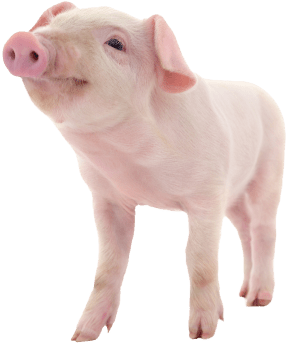Written By: Jason Price, Technical Support Manager with LiphaTech
Rodents are animals that have behaviors that may take a little time to investigate, but if you do your homework you can learn the best ways to prevent and control them. It’s like being a rodent detective by finding clues that lead you to the answers to your problems. Once you have done your investigation, you will know which rodent control tools and techniques you will need to move forward.
The Inspection
- Talk with the farm managers and workers to get an overview of the rodent problems that they are seeing
- Identify the rodent you are dealing with, whether it is House Mice, Norway Rats, or Roof Rats. This will determine the areas to look for populations and ways to attack
- Perform inspections of the interior and exterior of the houses
- Inspect looking high and low. Rodents do have the ability to climb 30 feet to reach entryways to structures.
- Look for gnawing, nesting areas, burrows, feeding areas, water supplies, runways, greasy rub marks, holes in walls around pipes, inlets, ventilation openings, and cracks or holes in structures
- Do a nighttime inspection to get an idea of the population by doing rodent counts with a flashlight on the fronts and backs of all houses. Also, inspect manure pits and other areas of interest. You will get a good overview of your population since rodents are primarily nocturnal.
Common Signs of Rodent Infestations
-
Damage to Houses - Cool Cells and curtains with holes and damage, gnawing on electrical wires, burrows underneath the house’s foundations and loss of insulation in the attics and walls
-
Gnawing - Fresh gnaw marks are light in color and will darken over time. Mice will tend to scratch spots approximately 1/16 of an inch. While Rats will gnaw areas of 1/8 of an inch
-
Odor - The presence of rodents will leave odors such as smells of urine
-
Droppings - One key factor in identifying your rodent can be their droppings. The size of the droppings will help with the identity of your rodent. You can also look for the freshness of the droppings to find current travel areas
-
Rub Marks & Runways - The rodent has a body oil that will be left behind when they travel, and we call them rub marks. The fresher rub marks will smear, and the older ones tend to flake away. Runways are found in areas where the rodents are traveling most frequently. These are usually found between where they nest and feed. They memorize their surroundings through their muscle memory and use the same paths repeatedly. They prefer to move along walls and other objects when they travel
Inspection Tools
-
Flashlight - With 700+ lumens to see the rodents during nighttime inspection and to find other rodent signs
-
Thermal Camera - To see thermal heat from the rodents inside plywood walls and inside tri-ply ceilings
-
Trail Cameras - To monitor activity when you are not there and to discover the rodents’ activity and routes
-
Micro Snake Camera - To see inside small holes inside walls and ceilings
-
Night Vision Binoculars - To help with nighttime inspections to see the activity with no lights on to spook the rodents
-
Black Light - To detect rodent urine
-
Small Notebook - To record all evidence, important notes, and the numbers of rodents counted
-
Rubber Gloves - To protect yourself from diseases carried by rodents and any contact with the bait
-
Hand Sanitizer - Use over 60% alcohol-based products to kill any bacteria you may encounter
Contact your QC Supply representative or call 800.433.6340 for further information or support. Shop our line of LiphaTech Products here.

 You are being redirected to QC Supply Pharmacy, where you’ll find a wide selection of high-quality prescription and pharmaceutical products for animals of all sizes.
Enjoy the same great service and expertise you trust from QC Supply.
Click below to continue shopping.
Continue
No thanks, stay on the main site
Powered by
You are being redirected to QC Supply Pharmacy, where you’ll find a wide selection of high-quality prescription and pharmaceutical products for animals of all sizes.
Enjoy the same great service and expertise you trust from QC Supply.
Click below to continue shopping.
Continue
No thanks, stay on the main site
Powered by

